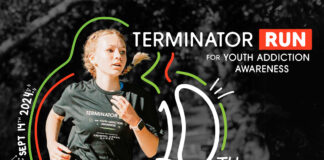Without a doubt running injuries can take all the joy out of running, as well as have a negative impact on your mental health. While some injuries are caused by simple accidents—such as a trip or fall on a trail—others can be prevented by adapting training methods and listening to your body.
Cal Zaryski, owner of CriticalSpeed.com, in Calgary, AB, has been coaching endurance athletes of all ages and abilities for 35 years and is clear on his strategy for reducing injury. “Hire an experienced professional coach who is highly educated in biomechanics, stress load management and scheduling at the very least,” he says.
Scott Simpson, from Saanich Physiotherapy in Victoria, B.C., also agrees that runners should work with an experienced coach or mentor as they can monitor and structure the workload. “One of the key elements, particularly when training for longer events, is load management so that you build your volume up gradually,” he says.
Zaryski also recommends adding cross-training. “Instead of accumulating mileage or duration running, figure out what percentage of your weekly training time needs to be scheduled for enhancing recovery rather than loading more stress.”
Some examples of cross-training options include cycling, swimming, elliptical and even anti-gravity treadmill running. Zaryski is also a big advocate of deep-water running, which is something that most runners rarely do.
Julian Cooper, a registered physiotherapist in Vancouver, B.C., says that runners must recover well and address problem areas proactively. “The importance of recovery cannot be understated for both training adaptation—i.e., getting fitter and faster—and injury prevention purposes.”
Being consistent with your running will allow your body to adapt to the impact stress of running and can protect you against future injury.
Recovery includes adequate sleep, stress reduction/management, proper nutrition, training program adjustments, cross-training, as well as easy running. Recovering well involves the ability to “listen to your body” and knowing when to stop. Therefore, persistent aches, soreness, and niggles are often warning signs of injuries.
In addition, Cooper states that: “You must switch up the pace because if you are running at the same pace for all your runs you will be stressing your joints, muscles, and tendons in the same repetitive manner, increasing your risk of being sidelined with injury.”
Furthermore, he recommends including hills, speed intervals and even track sessions in your training program to increase your fitness and vary the repetitive stress of running.
“Running more frequently, as opposed to longer, can effectively stimulate musculoskeletal adaptations while mitigating the ‘boom and bust’ cycle. Being consistent with your running will allow your body to adapt to the impact stress of running and can protect you against future injury,” Cooper adds.
Dr. Trent Stellingwerff from the Canadian Sport Institute Pacific in Victoria, B.C. is a leading sport scientist and coach. He states that runners should be aware of the signs and symptoms of Relative Energy Deficiency in Sport (RED-S). “Runners with RED-S have been shown to be 4.5 times more likely to have a stress fracture.” RED-S occurs when calorie intake is insufficient to meet the calories expended through exercise, which can lead to poor bone health and a nutritional imbalance, hence the risk of stress fractures.
Monitoring volume increase is also crucial. Stellingwerff states that runners must not only slowly increase volume at less than 10 – 15 per cent per week, but also not increase fast running speeds too soon and not constantly run on harder surfaces.
Simpson concurs with mixing up running surfaces, emphasizing that running on soft terrain should be done when possible. But he adds: “There are no quick fixes or quick results when it comes to training for long distance events.”
As we can see, a sound training plan must have the right balance between volume and intensity as well as cross-training. Working with the right coach will help ensure that you can maintain the right balance between your hard and easy days. You must also recognize the signs and symptoms of overtraining and injuries before it’s too late.
You may also like: The High-Impact Injury

Read This Story in Our 2023 Running Issue
Featuring Rory Linkletter, Canadian long-distance runner. Add to your bucket list with the top Destination Marathons Around the World. Train for 10 km right up to a marathon – plus a 70.3 program. Increase your strength and work your core with Canada’s Top Fitness Trainers. Enjoy plant-based, post-run breakfasts and so much more.
















